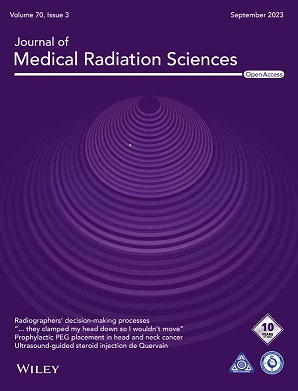
Together or Separate: What is best practice when imaging bilateral hands for rheumatoid arthritis examinations?
https://doi.org/10.1002/jmrs.689
The study aimed to investigate the radiation dose and image quality of concurrent and unilateral radiographic techniques for imaging bilateral hands in rheumatoid arthritis (RA) patients. The gap in evidence addressed was the lack of a standardised approach to bilateral hand examinations, and the significance of determining the best approach lies in the importance of diagnostic and follow-up imaging for RA patients.
Experimental Study Using Anthropomorphic Hand Phantoms
The study conducted experimental research using anthropomorphic hand phantoms to compare the radiation dose and image quality of both techniques. The results showed that the unilateral technique resulted in an overall higher radiation dose but produced minimal distortion, whereas the concurrent technique demonstrated increased distortion, which is clinically significant for RA grading.
Implications for Imaging in Rheumatoid Arthritis
RA predominantly affects the small joints of the hand, and conventional/plain radiography is the preferred modality for imaging RA. The study found that the unilateral technique should be performed for bilateral hand examinations to limit distortion caused by beam divergence, which is crucial for accurately diagnosing and grading RA.
Conclusions and Recommendations
In conclusion, the study recommended the unilateral approach for bilateral hand examinations in RA patients to limit distortion and improve image quality. The findings have implications for medical imaging departments and potential changes in current practice.